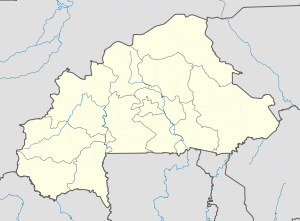Richard Threlkeld Cox
Richard Threlkeld Cox | |
|---|---|
| Born | August 2, 1898 |
| Died | May 2, 1991 (aged 92) |
| Nationality | American |
| Occupation | Physics professor |
| Known for | Cox's theorem |
Richard Threlkeld Cox (August 5, 1898 – May 2, 1991) was a professor of physics at Johns Hopkins University, known for Cox's theorem relating to the foundations of probability.[1]
Biography
He was born in Portland, Oregon, the son of attorney Lewis Cox and Elinor Cox. After Lewis Cox died, Elinor Cox married John Latané, who became a professor at Johns Hopkins University in 1913. In 1915 Richard enrolled at Johns Hopkins University to study physics, but his studies were cut short when he was drafted for World War I. He stayed in the US after being drafted and returned to Johns Hopkins University after the war, completing his BA in 1920. He earned his PhD in 1924; his dissertation was A Study of Pfund's Pressure Gauge.[1]
He taught at New York University (NYU) from 1924 to 1943, before returning to Johns Hopkins to teach. He studied probability theory, the scattering of electrons, and the discharges of electric eels.[1] Richard Cox's most important work was Cox's theorem.[2]
His wife, Shelby Shackleford (1899 Halifax, Virginia – 1987), whom he married in 1926, was an accomplished artist and illustrated Electric Eel Calling, a book on electric eels.[1]
He died on May 2, 1991. His doctoral students include Carl T. Chase and Clifford Shull.
Cox and parity violation
According to T. D. Lee and C. N. Yang, parity violation implies that electrons produced by β decay should be longitudinally polarized.[3] In 1959, Lee Grodzins indicated how a 1928 experiment by R. T. Cox, C. G. McIlwraith, and B. Kurrelmeyer on double scattering of β rays from radium[4][5] confirms the polarization effect predicted by Lee and Yang.[6] Carl T. Chase in 1929 and 1930 performed experiments confirming the 1928 experiment by Cox, McIlwraith, and Kurrelmeyer.[6]
루이 비튼 인터뷰
비튼: ... 리차드 콕스에 대해 말해주고 싶었어 리처드 콕스를 언급하셨잖아요 그는 많은 일을 했지만, 응축물리학에서도 몇 가지 실험을 했다. 그는 물리학과 일치하지 않는 변칙을 발견했다. 그것은 설명할 수 없었다. 그것은 전혀 일관성이 없었고, 그는 자신의 실험이 틀렸다는 말을 듣고, 자신의 실험이 옳다는 것을 알고 있었다. 그래서 그는 그것을 출판했고, 그것은 문헌상의 변칙이었습니다. 몇 년 후, 패리티가 보존되지 않았다는 것이 밝혀졌고, 그의 변칙은 비패리티였다. 많은 사람들이 그의 실험이 그들이 그것을 정확하게 해석했다면 패리티가 보존되지 않았다는 것을 보여주는 첫 번째 실험이었다는 것을 이제 잘 알고 있다.
Rickles: 그러나 그는 그런 해석을 하지 않고 다만 뭔가 이상한 점이 있다고만 생각했다.
비튼:맞아. 그러나 그는 그의 실험이 옳고 사람들이 그에게 그의 실험이 틀렸다고 말하려 한다는 것을 알고 있었다.[7]
선택한 작품
- Cox, R. T, "추론과 탐구 - 귀납논리의 에세이", 최대 엔트로피 형식주의, Ed. 1979년 M.I.T. 프레스, 레빈과 트리부스.
- Cox, R. T. (1946). "Probability, Frequency and Reasonable Expectation" (PDF). American Journal of Physics. 14 (1): 1–10. Bibcode:1946AmJPh..14....1C. doi:10.1119/1.1990764.
- Jones Hopkins University Press, 볼티모어, MD (1961년)의 개연성 추론의 대수.[8]
참조
- ^ a b c d Tribus, Myron (2002), "An appreciation of Richard Threlkeld Cox", Bayesian Inference and Maximum Entropy Methods in Science and Engineering (4-9 August 2001, Baltimore, Maryland, USA), AIP Conf. Proc., 617, pp. 3–20, doi:10.1063/1.1477035.
- ^ Van Horn, Kevin S. (2003), "Constructing a logic of plausible inference: a guide to Cox's theorem", International Journal of Approximate Reasoning, 34 (1): 3–24, doi:10.1016/S0888-613X(03)00051-3, MR 2017777.
- ^ Trigg, George L. (21 March 2013). Landmark Experiments in Twentieth-Century Physics. Courier Corporation. p. 210. ISBN 978-0-486-15120-5.
- ^ Cox, R. T.; McIlwraith, C. G.; Kurrelmeyer, B. (1928). "Apparent Evidence of Polarization in a Beam of β-Rays". Proceedings of the National Academy of Sciences. 14 (7): 544–549. doi:10.1073/pnas.14.7.544. PMC 1085607. PMID 16587360.
- ^ Barrett, Ross; Delsanto, Pier Paolo; Tartaglia, Angelo (2016-05-07). Physics: The Ultimate Adventure. p. 37. ISBN 9783319316918.
- ^ a b Grodzins, L. (1959). "The history of double scattering of electrons and evidence for the polarization of beta rays". Proceedings of the National Academy of Sciences. 45 (3): 399–405. doi:10.1073/pnas.45.3.399. ISSN 0027-8424. PMC 222574. PMID 16590399.
- ^ "Interview of Louis Witten by Dean Rickles and Donald Salisbury on 2011 March 17". Oral History Interviews, American Institute of Physics. 19 November 2015.
- ^ Fabens, A. J. (1961). "Review of The Algebra of Probable Inference by Richard T. Cox". Science. 134 (3478): 551. doi:10.1126/science.134.3478.551. ISSN 0036-8075.


